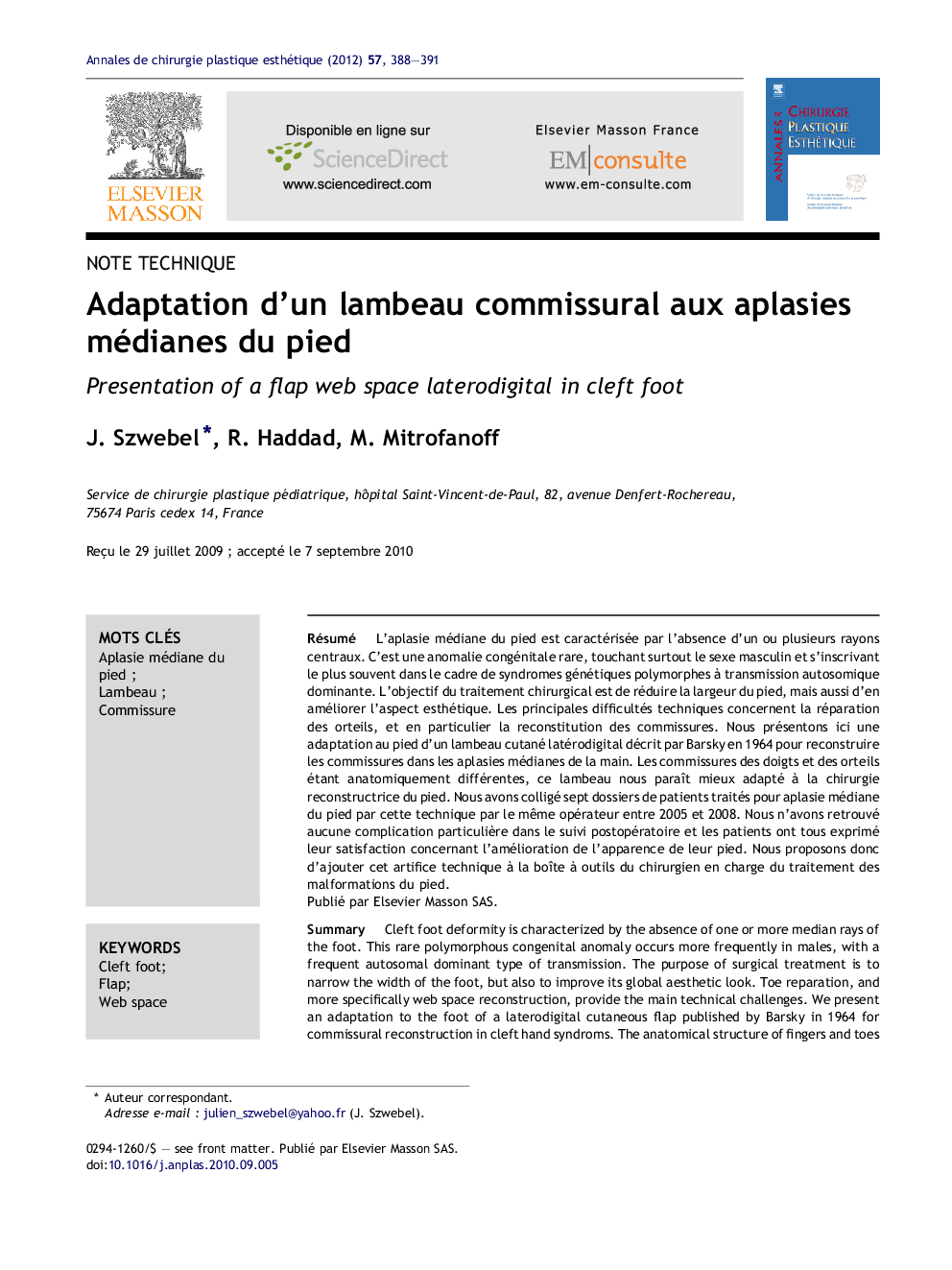| Article ID | Journal | Published Year | Pages | File Type |
|---|---|---|---|---|
| 3185017 | Annales de Chirurgie Plastique Esthétique | 2012 | 4 Pages |
RésuméL’aplasie médiane du pied est caractérisée par l’absence d’un ou plusieurs rayons centraux. C’est une anomalie congénitale rare, touchant surtout le sexe masculin et s’inscrivant le plus souvent dans le cadre de syndromes génétiques polymorphes à transmission autosomique dominante. L’objectif du traitement chirurgical est de réduire la largeur du pied, mais aussi d’en améliorer l’aspect esthétique. Les principales difficultés techniques concernent la réparation des orteils, et en particulier la reconstitution des commissures. Nous présentons ici une adaptation au pied d’un lambeau cutané latérodigital décrit par Barsky en 1964 pour reconstruire les commissures dans les aplasies médianes de la main. Les commissures des doigts et des orteils étant anatomiquement différentes, ce lambeau nous paraît mieux adapté à la chirurgie reconstructrice du pied. Nous avons colligé sept dossiers de patients traités pour aplasie médiane du pied par cette technique par le même opérateur entre 2005 et 2008. Nous n’avons retrouvé aucune complication particulière dans le suivi postopératoire et les patients ont tous exprimé leur satisfaction concernant l’amélioration de l’apparence de leur pied. Nous proposons donc d’ajouter cet artifice technique à la boîte à outils du chirurgien en charge du traitement des malformations du pied.
SummaryCleft foot deformity is characterized by the absence of one or more median rays of the foot. This rare polymorphous congenital anomaly occurs more frequently in males, with a frequent autosomal dominant type of transmission. The purpose of surgical treatment is to narrow the width of the foot, but also to improve its global aesthetic look. Toe reparation, and more specifically web space reconstruction, provide the main technical challenges. We present an adaptation to the foot of a laterodigital cutaneous flap published by Barsky in 1964 for commissural reconstruction in cleft hand syndroms. The anatomical structure of fingers and toes commisures being different, this flap seems more adapted to the surgery of the foot. We gathered seven patients’ files treated for ectrodactyly of the foot with this technique by the same surgeon from 2005 to 2008. No particular postoperative complications were noted, and the patients all expressed their satisfaction regarding the improvement of the appearance of their foot. We recommend to add the use of this flap in the “tool box” of the surgeon in charge of the management of foot deformities.
